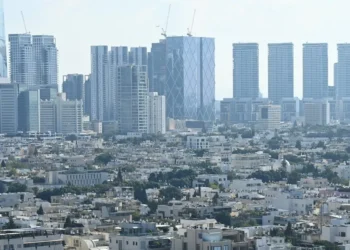How 2025 Rewrote Hollywood’s Playbook for Leaner Scripted Shows | Analysis
Anyone working in television will tell you that the Peak TV era has come and gone. But in 2025, a...
Dick Van Dyke Wanted to Remake ‘The Odd Couple’ With One of the Stars of ‘Elf’
The Odd Couple originated as a 1965 stage play about opposites Felix Ungar and Oscar Madison, who become roommates after...
Public Rejoices as Porsche Releases Beautiful Ad Not Made Using AI
This holiday season, German automaker Porsche is winning hearts and minds by putting out a Christmas-themed ad that seemingly isn’t...
Watch ‘awkward’ moment Kanye West is brought onstage at Deon Cole’s improv show
Kanye West had an “awkward” moment with “dear friend” Deon Cole onstage at his comedy show Friday night. While the...
Israel fears US push to start next phase of Gaza cease-fire at Trump-Netanyahu meeting: reports
Israeli Prime Minister Benjamin Netanyahu is expected to push back hard against any attempt by the Trump administration to move...
‘Notable sign of dysfunction’ threatens GOP’s midterm chances: analysis
Midterm election chances for the Republican Party could dwindle for a surprising reason, a political analyst has predicted. A quiet...
LA Teen Embarrassed by Elon’s ‘Crazy’ Public Lusting Over Her
Tech mogul Elon Musk has been roasted for a “crazy,” if not creepy, take on Danish deportation laws by a...
AI won’t hollow out white-collar jobs, it will fuel growth — says Box CEO Aaron Levie
AI could expand white-collar work by making complex tasks cheap enough to attempt, Box CEO Aaron Levie says. Justin Sullivan/Getty...
3 Ways Trump’s Wealth Has Soared Since He Returned to Office
For decades, Donald Trump made much of his money from buildings and golf courses he owned or things he lent...
10 Nudge Words to Adopt in 2026
New Year’s resolutions are often punishing. You force yourself to drop 20 pounds, go to the gym more often, get...














